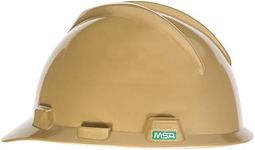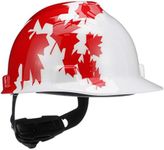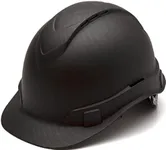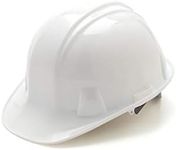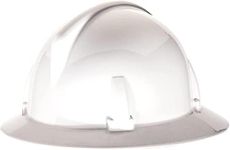Buying Guide for the Best Hard Hats
Choosing the right hard hat is important for your safety and comfort on the job. Hard hats are designed to protect your head from falling objects, impacts, and electrical hazards. When picking a hard hat, you should consider the type of work you do, the environment you work in, and how long you’ll be wearing it. Understanding the key features will help you select a hard hat that offers the right balance of protection, comfort, and durability for your needs.Type (Type I vs. Type II)The type of hard hat refers to the kind of protection it offers. Type I hard hats are designed to protect the top of your head from impacts, which is common in many construction and industrial settings. Type II hard hats provide protection not only from impacts to the top but also to the sides of the head, making them suitable for environments where hazards can come from different directions. To choose the right type, think about the risks in your workplace—if falling objects are the main concern, Type I may be enough, but if there’s a chance of side impacts, Type II is a safer choice.
Class (Electrical Protection)Hard hats are classified based on their ability to protect against electrical hazards. Class G (General) hard hats offer limited electrical protection, Class E (Electrical) provide high-voltage protection, and Class C (Conductive) offer no electrical protection. If you work near electrical wires or equipment, Class E is the safest option. For general construction without electrical risks, Class G is usually sufficient. If you don’t need electrical protection and want better ventilation, Class C might be more comfortable.
Suspension SystemThe suspension system is the internal harness that holds the hard hat on your head and absorbs shock. There are different types, such as 4-point and 6-point suspensions, which refer to how many places the harness connects to the shell. More points generally mean better weight distribution and comfort. If you’ll be wearing the hard hat for long periods, a 6-point suspension can reduce pressure and make it more comfortable. Adjustable suspensions also help you get a secure fit, which is important for both safety and comfort.
MaterialHard hats are made from materials like high-density polyethylene (HDPE), fiberglass, or thermoplastics. HDPE is lightweight and durable, making it a common choice for most users. Fiberglass is more resistant to heat and chemicals, which is useful in specialized environments. If you work in hot or chemically hazardous areas, consider a fiberglass hard hat. For general use, HDPE is usually sufficient and more comfortable for all-day wear.
Fit and Comfort FeaturesComfort features include things like padded sweatbands, ventilation holes, and easy-to-adjust straps. These features don’t affect protection but can make a big difference if you wear your hard hat for long hours. If you work in hot conditions, look for ventilation. If you sweat a lot, a padded or moisture-wicking sweatband can help. Always try on different hard hats to see which feels best for your head shape and size.
Accessory CompatibilitySome hard hats are designed to work with accessories like face shields, earmuffs, or headlamps. If your job requires extra protection or equipment, make sure the hard hat you choose has slots or attachments for these accessories. This ensures you can stay safe and comfortable without having to modify your hard hat.


